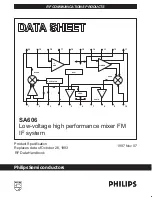
Seagate SurveiSRS HDD Product Manual, Rev. D
16
www.seagate.com
2.9.6
Vibration
All vibration specifications assume that the drive is mounted securely with the input vibration applied at the drive
mounting screws. Vibration may be applied in the X, Y or Z axis, with linear swept sine inputs.
2.9.6.1
Operating vibration
The maximum vibration levels that the drive may experience while meeting the performance standards specified
in this document are specified below.
2.9.6.2
Nonoperating vibration
The maximum nonoperating vibration levels that the drive may experience without incurring physical damage or
degradation in performance when subsequently put into operation are specified below.
2.10
Acoustics
Table 5
Fluid Dynamic Bearing (FDB) motor acoustics
Model
2.1 bels (typ)
2.3 bels (max)
2.3 bels (typ)
2.4 bels (max)
1.9 bels (typ)
2.1 bels (max)
2.2 bels (typ)
2.3 bels (max)
Drive acoustics are measured as overall A-weighted acoustic sound power levels (no pure tones). All
measurements are consistent with ISO document 7779. Sound power measurements are taken under essentially
free-field conditions over a reflecting plane. For all tests, the drive is oriented with the cover facing upward.
* During periods of drive idle, some offline activity may occur according to the S.M.A.R.T. specification, which may increase acoustic and power
to operational levels
.
2.10.1 Test for Prominent Discrete Tones (PDTs)
Seagate follows the ECMA-74 standards for measurement and identification of PDTs. An exception to this
process is the use of the absolute threshold of hearing. Seagate uses this threshold curve (originated in ISO 389-
7) to discern tone audibility and to compensate for the inaudible components of sound prior to computation of
tone ratios according to Annex D of the ECMA-74 standards.
2Hz to 22Hz
0.25 Gs (Limited displacement)
22Hz to 350Hz
0.50 Gs
350Hz to 500Hz
0.25 Gs
5Hz to 22Hz
3.0 Gs (limited displacement)
22Hz to 350Hz
3.0 Gs
35Hz to 500Hz
3.0 Gs
Note
For seek mode tests, the drive is placed in seek mode only.
The number of seeks per second is defined by the following equation:
(Number of seeks per second = 0.4 / (average l average access time)
Idle*
Seek
ST3000VX005
ST2000VX005
ST1000VX003















































